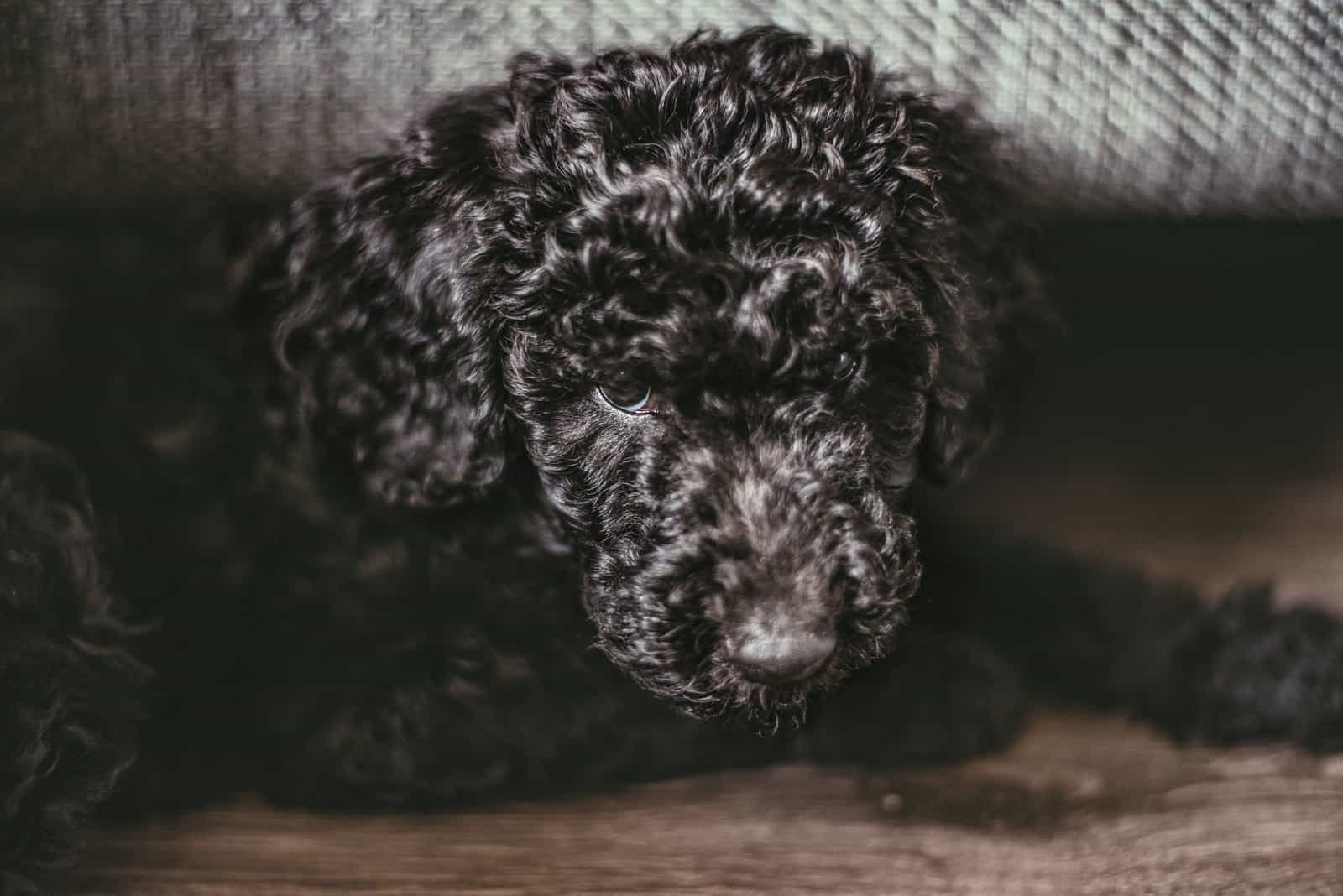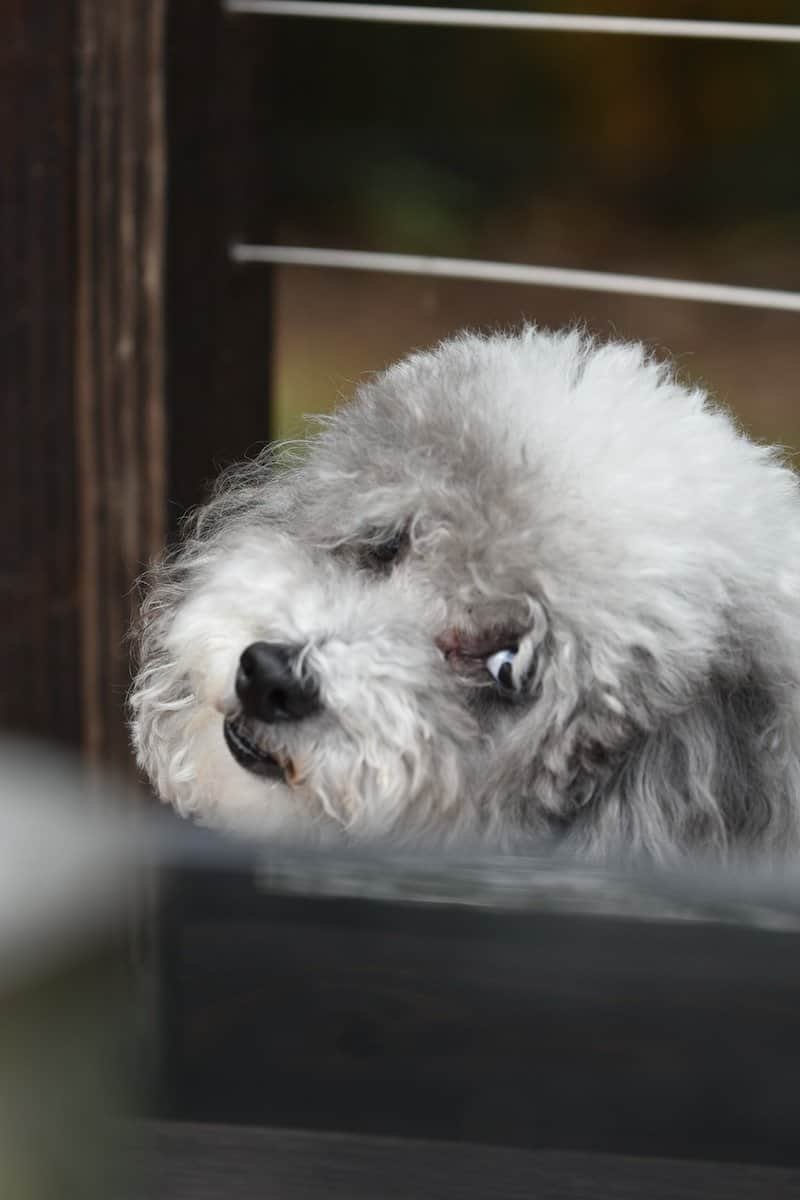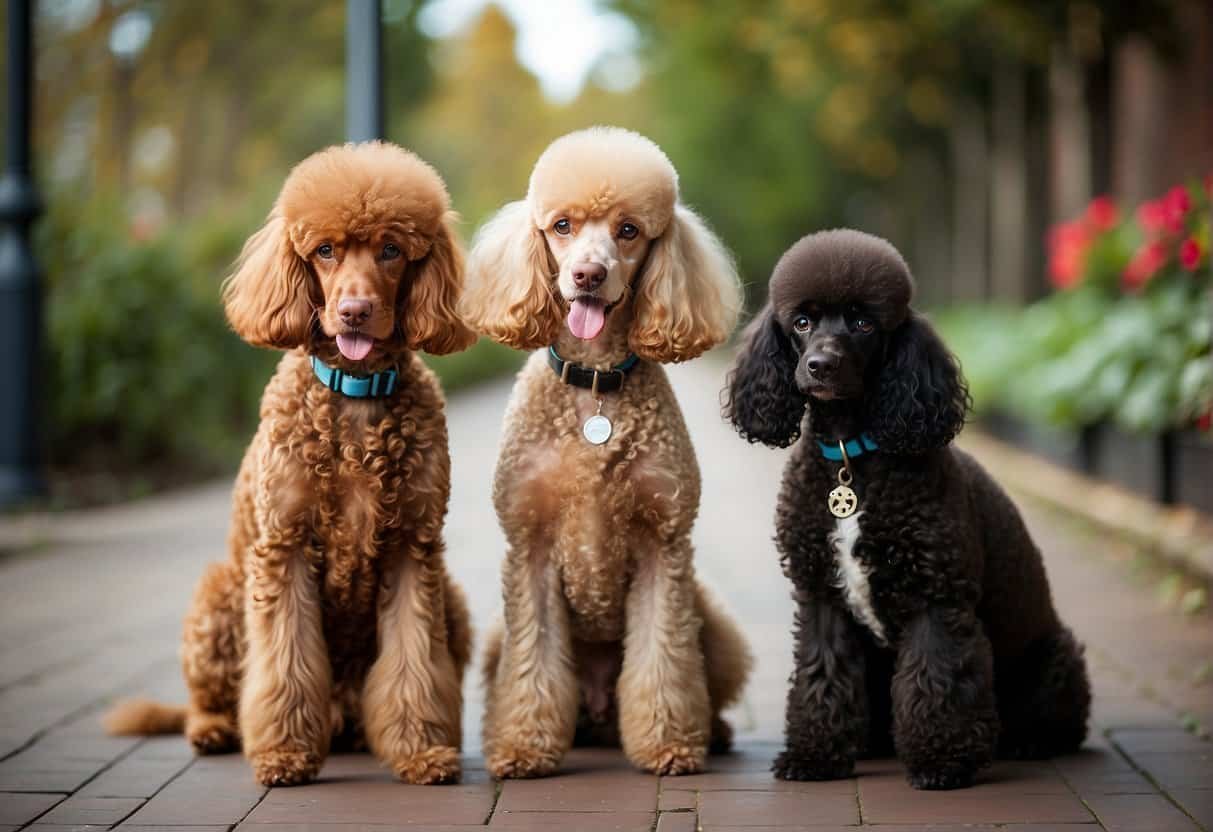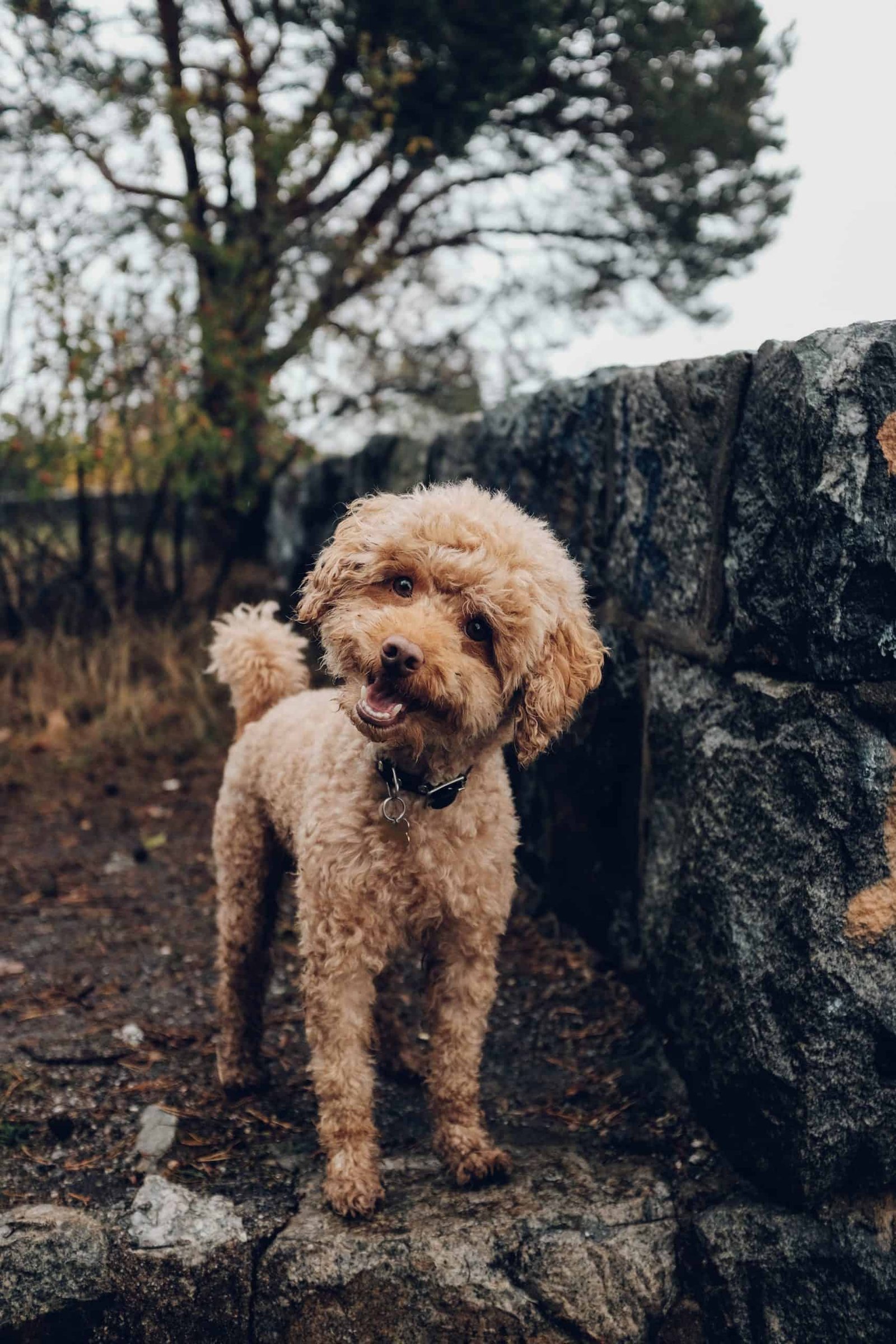Poodles are a beloved breed of dog known for their distinctive curly coats and intelligence. However, not all poodles are created equal. Some poodles, known as giant poodles, are significantly larger than their standard and miniature counterparts. In this article, we will explore the world of giant poodles, from their anatomy and appearance to their health and lifespan.
Last Updated: November 2025 · This article has been reviewed and updated to ensure accuracy and relevance.
Understanding the giant poodle is essential for anyone considering adding one to their family. These dogs can grow to be over 2 feet tall and weigh up to 85 pounds, making them a significant commitment in terms of space and care. Despite their size, giant poodles are known for their gentle temperament and loyalty, making them excellent family pets. In this article, we will delve into the specifics of caring for a giant poodle, including their exercise needs, grooming requirements, and dietary considerations.
Key Takeaways
- Giant poodles are significantly larger than their standard and miniature counterparts.
- Despite their size, giant poodles are known for their gentle temperament and loyalty, making them excellent family pets.
- Caring for a giant poodle requires attention to their exercise needs, grooming requirements, and dietary considerations.
Understanding the Giant Poodle
The Giant Poodle is a majestic breed that is known for its elegance and grace. This breed is a variation of the Poodle breed, which is one of the most popular dog breeds in the world. The Giant Poodle is also known as the Royal Standard Poodle or the Giant Royal Standard Poodle.
The Poodle breed comes in three sizes: Standard, Miniature, and Toy. The Giant Poodle is the largest of the three sizes, with a height of over 24 inches at the shoulder. This breed is known for its intelligence, trainability, and affectionate nature.
The Giant Poodle has a unique set of dimensions that set it apart from other breeds. The breed has a long, slender neck, a deep chest, and a straight back. The breed’s head is long and narrow, with a pronounced stop and a slight muzzle. The breed’s eyes are oval-shaped and dark, and the ears are long and floppy.
One of the most notable characteristics of the Giant Poodle is its coat. The breed has a curly, dense coat that is hypoallergenic, making it an ideal breed for people with allergies. The coat can come in a variety of colors, including white, black, brown, and red.
The Giant Poodle is a highly trainable breed that is often used for therapy work, obedience competitions, and hunting. The breed is also known for its athleticism and agility, making it an excellent choice for people who enjoy outdoor activities.
Overall, the Giant Poodle is a magnificent breed that is well-suited for a variety of lifestyles. Whether you are looking for a companion, a working dog, or a show dog, the Giant Poodle is an excellent choice.
Anatomy and Appearance
Poodle giants are a large breed of dog that is known for their curly coat and distinctive appearance. They are the largest of the three poodle breeds, with a height of over 15 inches at the shoulder and a weight of up to 70 pounds. Despite their size, they are graceful and elegant, with a proud and confident bearing.
The coat of a poodle giant is a defining feature of the breed. It is curly and dense, with a woolly texture that is soft to the touch. The coat can be a range of colors, including black, white, brown, and gray. Regular grooming is necessary to maintain the coat’s appearance, and many owners opt to have their poodle giants professionally groomed to keep their coats in top condition.
In terms of their appearance, poodle giants have a distinctive head shape, with long, straight ears that hang close to the head. They have a long, straight muzzle and dark, oval-shaped eyes that are set wide apart. Their bodies are muscular and well-proportioned, with a deep chest and a straight back. They have long, straight legs that are well-muscled and sturdy, with large, round paws that provide excellent traction.
Overall, the appearance of a poodle giant is one of elegance and grace. Their size and stature make them an impressive sight, and their distinctive coat and proud bearing make them stand out in any crowd. Whether you are looking for a loyal companion or a show dog, the poodle giant is a breed that is sure to impress.
Poodle Varieties
Poodles are a popular breed of dog known for their curly, hypoallergenic coat and intelligence. They come in a variety of sizes, including standard, miniature, and toy. Each size has its own unique characteristics and personality traits.
Standard Poodle
The standard poodle is the largest of the poodle varieties, standing over 15 inches tall at the shoulder. They are known for their elegant appearance and athleticism, making them a popular choice for dog shows and agility competitions. Standard poodles are also highly intelligent and trainable, making them a great choice for families who want a dog that can learn quickly and perform a variety of tasks.
Miniature Poodle
The miniature poodle is a smaller version of the standard poodle, standing between 10 and 15 inches tall at the shoulder. They are also highly intelligent and trainable, but are better suited for smaller living spaces. Miniature poodles are also known for their affectionate and playful nature, making them a great choice for families with children.
Toy Poodle
The toy poodle is the smallest of the poodle varieties, standing under 10 inches tall at the shoulder. They are often referred to as “teacup” poodles, although this is not an official breed name. Toy poodles are known for their lively and playful personality, making them a great choice for families who want a small dog with a big personality.
Moyen Poodle
The moyen poodle is a medium-sized poodle variety that falls between the miniature and standard sizes. They are not recognized by the American Kennel Club (AKC), but are recognized by other organizations. Moyen poodles are known for their friendly and outgoing personality, making them a great choice for families who want a dog that is both intelligent and affectionate.
Poodle Mixes
Poodle mixes, also known as “doodles,” are becoming increasingly popular. These dogs are a cross between a poodle and another breed, such as a Labrador retriever or a golden retriever. Poodle mixes are often hypoallergenic like poodles, but can also inherit the personality traits of the other breed. They come in a variety of sizes and colors, making them a popular choice for families who want a unique and lovable companion.
Overall, poodles are a versatile and intelligent breed that come in a variety of sizes and personalities. Whether you prefer a standard, miniature, or toy poodle, or a poodle mix, there is a poodle out there for everyone.
Health and Lifespan
Poodle giants are generally healthy dogs with a lifespan of 10 to 12 years. However, like all breeds, they are prone to certain health issues that owners should be aware of.
One of the most serious health problems that can affect poodle giants is bloat. This is a life-threatening condition that occurs when the stomach fills with gas and twists on itself, cutting off blood supply to the stomach and other organs. Poodle giants are also prone to hip dysplasia, which is a genetic condition that affects the hip joint and can cause pain and mobility issues.
Another health issue that poodle giants may experience is progressive renal atrophy, which is a genetic condition that affects the kidneys and can lead to kidney failure. Elbow dysplasia is another genetic condition that can affect poodle giants and cause pain and mobility issues.
In addition to these genetic health issues, poodle giants may also experience dental problems and allergies. It is important to keep up with regular veterinary check-ups and dental cleanings to catch any potential health issues early on.
Overall, poodle giants are generally healthy dogs with a decent lifespan. However, owners should be aware of the potential health issues that can affect their pets and take steps to prevent or treat them as needed.
Care and Maintenance
Caring for a giant poodle requires a bit more effort than caring for a smaller poodle. However, with proper care and maintenance, your giant poodle can live a healthy and happy life.
Care
Giant poodles have beautiful, curly coats that require regular grooming. Brushing their coat daily will help prevent tangles and mats. Regular baths are also important to keep their coat clean and healthy.
It’s important to keep your giant poodle’s ears clean and dry to prevent ear infections. Check their ears regularly for any signs of redness or discharge. You can use a gentle ear cleaner recommended by your veterinarian to clean their ears.
Exercise
Giant poodles are active dogs that require regular exercise to stay healthy and happy. Daily walks and playtime are important for their physical and mental well-being. However, it’s important to avoid over-exercising giant poodles, especially when they are young, as it can cause joint problems later in life.
Balance
Maintaining a balanced diet is essential for your giant poodle’s overall health. Feeding them a high-quality dog food that meets their nutritional needs is important. It’s also important to avoid overfeeding your giant poodle, as they can easily become overweight, which can lead to health problems.
Regular visits to the veterinarian are also important for your giant poodle’s health. They will need regular check-ups, vaccinations, and preventative care to stay healthy and happy.
In summary, caring for a giant poodle requires regular grooming, exercise, a balanced diet, and regular visits to the veterinarian. With proper care and maintenance, your giant poodle can live a healthy and happy life.
Breeding Information
Breeding giant poodles requires specialized knowledge and experience. It is important to find a reputable breeder who adheres to breed standards and prioritizes the health and well-being of their dogs.
A specialized breeder will have experience breeding giant poodles and will be able to provide valuable information about the breed. They will also be able to answer any questions you may have about the breeding process and what to expect from your new puppy.
When breeding giant poodles, it is important to follow breed standards to ensure that the puppies meet the desired characteristics of the breed. These standards include physical traits such as size, coat color, and texture, as well as temperament and behavior.
A reputable breeder will prioritize the health of their dogs and will perform health screenings to identify any potential genetic health issues. They will also provide documentation of these screenings and any other relevant health information.
When selecting a breeder, it is important to do your research and ask for references. A good breeder will be transparent and open about their breeding practices and will be willing to answer any questions you may have.
Overall, breeding giant poodles requires specialized knowledge and experience. It is important to find a reputable breeder who adheres to breed standards and prioritizes the health and well-being of their dogs.
Poodles as Pets
Poodles are a popular breed of dog that make excellent companions. They are known for their intelligence, trainability, and affectionate nature. Poodles come in three different sizes: standard, miniature, and toy. The largest of these is the standard poodle, which can grow up to 70 pounds. However, there is also a larger variety known as the Poodle Giant that can weigh up to 100 pounds.
Poodles are great companion dogs because they are highly social and love to be around their owners. They are very affectionate and enjoy being petted and cuddled. They are also very intelligent dogs and can be trained to do a variety of tasks, from simple tricks to more complex behaviors like retrieving items or assisting people with disabilities.
One of the great things about poodles is that they are hypoallergenic, which means that they produce less dander and are less likely to cause allergies. This makes them a great choice for people with allergies or asthma. Additionally, because they do not shed much, they are a good choice for people who do not want to deal with a lot of pet hair in their home.
If you’re considering getting a poodle as a pet, it’s important to remember that they do require regular grooming to keep their coats looking their best. This includes regular brushing and trimming, as well as occasional baths. However, with a little bit of effort, poodles can make wonderful pets for anyone looking for a loyal, affectionate companion.
Poodles in Work and Sport
Poodles are not just fancy show dogs. They are also highly versatile working dogs that excel in a variety of tasks. From hunting to guiding, poodles have proven to be an invaluable asset in many fields.
The American Kennel Club (AKC) recognizes the Poodle as a breed that excels in obedience, agility, and tracking. They are also known for their excellent hunting abilities, making them a popular choice for hunters.
Poodles are also well-suited to work as guide dogs for the visually impaired. Their intelligence, obedience, and gentle nature make them excellent companions for those in need of assistance.
In addition to their work as guide dogs, poodles are also used as guard dogs due to their protective nature. They are quick to alert their owners to any potential danger and are not afraid to defend their territory.
Poodles are also highly skilled in herding, making them a great asset to farmers and ranchers. Their intelligence and agility make them well-suited for this task, and they excel at keeping livestock in line.
Finally, poodles are also highly competitive in agility competitions. Their athleticism, intelligence, and trainability make them a popular choice for this sport.
Overall, poodles are a highly versatile breed that excels in many fields. Whether as hunting dogs, guide dogs, guard dogs, herding dogs, or agility competitors, poodles have proven themselves to be an invaluable asset in many different settings.
Poodles and Other Breeds
Poodles are a popular breed of dog known for their intelligence, hypoallergenic coat, and elegant appearance. They come in four sizes: standard, miniature, toy, and teacup. While poodles are a distinct breed, they share some characteristics with other breeds.
One such breed is the Bernese Mountain Dog, which is a large breed known for its friendly and affectionate nature. When crossed with a poodle, the resulting breed is known as a Bernedoodle. Bernedoodles are intelligent and easy to train, making them a popular choice for families.
Another breed that shares some characteristics with poodles is the Saint Berdoodle, which is a cross between a Saint Bernard and a poodle. Saint Berdoodles are known for their gentle and affectionate nature, and they make great family pets.
While poodles are often bred for their hypoallergenic coat, other breeds like the Bernese Mountain Dog and Saint Bernard are not. However, when crossed with a poodle, the resulting breed may have a hypoallergenic coat, making them a great choice for people with allergies.
Overall, poodles are a unique breed of dog, but they share some characteristics with other breeds. Crossbreeding poodles with other breeds can result in a new breed with unique characteristics that make them great pets for families.
Understanding Poodle Colors
Poodles come in a variety of colors, which can be grouped into solid colors, parti-colors, and patterns. Solid colors include black, white, cream, apricot, red, blue, and brown. Parti-colors include any combination of white with one of the solid colors. Patterns include phantom, brindle, sable, and abstract.
The color of a poodle’s coat is determined by genetics. Each poodle has two genes that determine coat color, one from each parent. The dominant gene will determine the color of the coat. For example, if a poodle inherits a dominant black gene from one parent and a recessive brown gene from the other parent, the poodle will be black because the black gene is dominant.
One of the most popular poodle colors is cafe au lait. This color is a light brown with a pinkish tint. It is caused by a specific gene mutation that affects the production of pigment in the hair. Another popular color is red. Red poodles can range from a deep red to a light apricot color. They are often referred to as “apricot” poodles.
It is important to note that poodle colors can fade over time. This is especially true for red poodles, whose coats can fade to a lighter color as they age. Poodles can also change color as they get older, with some colors becoming more pronounced and others fading away.
In conclusion, understanding poodle colors is important for breeders and owners alike. By knowing the genetics behind coat color, breeders can make informed decisions about which dogs to breed. Owners can also use this knowledge to better care for their poodles, including choosing the right grooming products to maintain the color of their coat.
Cost of Owning a Giant Poodle
If you’re considering getting a Giant Poodle, it’s important to know that owning one can be quite expensive. The cost of owning a Giant Poodle can vary depending on several factors, including where you live, the quality of food you feed them, and their overall health.
Initial Costs
The initial cost of purchasing a Giant Poodle can range from $1,500 to $5,000, depending on the breeder and the dog’s pedigree. You should also factor in the cost of spaying or neutering your dog, which can range from $200 to $500.
Food and Supplies
Giant Poodles are a large breed, so they require a significant amount of food. You can expect to spend around $60 to $100 per month on food alone. You’ll also need to purchase supplies such as a collar, leash, and crate, which can cost around $200 to $500.
Veterinary Care
Giant Poodles are generally healthy dogs, but they can be prone to certain health issues such as hip dysplasia and bloat. You should expect to take your dog to the vet for regular checkups and vaccinations, which can cost around $300 to $500 per year.
If your dog does develop health issues, the cost of veterinary care can quickly add up. Surgery for hip dysplasia, for example, can cost anywhere from $1,500 to $6,000 per hip. It’s important to have a plan in place for unexpected veterinary expenses.
Grooming
Giant Poodles require regular grooming to keep their coats healthy and free of mats. You can expect to spend around $50 to $100 every six to eight weeks on grooming. If you choose to groom your dog yourself, you’ll need to purchase grooming supplies such as clippers and shampoo.
Training and Boarding
Training and socialization are important for any dog, but they are particularly important for a large breed like the Giant Poodle. You should expect to spend around $100 to $200 per session for professional training.
If you need to board your dog while you’re away, you can expect to spend around $50 to $100 per night. It’s important to choose a reputable boarding facility that can provide your dog with the care they need while you’re away.
Overall, owning a Giant Poodle can be a significant financial commitment. However, with proper planning and budgeting, you can provide your dog with the care they need while still staying within your budget.
Frequently Asked Questions
What is a Giant Poodle called?
A Giant Poodle is also known as a Royal Poodle or a Standard Poodle. The term “Giant” refers to the size of the dog, which is the largest of the three Poodle varieties.
What is the biggest Poodle?
The biggest Poodle is the Giant Poodle, which can stand up to 27 inches tall at the shoulder and weigh up to 85 pounds. The other two Poodle varieties are the Miniature Poodle, which stands between 10 and 15 inches tall and weighs between 10 and 15 pounds, and the Toy Poodle, which stands under 10 inches tall and weighs between 4 and 6 pounds.
Is Giant Poodle same as standard poodle?
Yes, the Giant Poodle is the same as the Standard Poodle. Both terms refer to the largest of the three Poodle varieties.
What are the characteristics of a Giant Poodle?
Giant Poodles are known for their intelligence, trainability, and affectionate nature. They have a curly, hypoallergenic coat that requires regular grooming. They are also athletic and require daily exercise to stay healthy and happy.
What is the difference between a Giant Royal Poodle and a Standard Poodle?
There is no difference between a Giant Royal Poodle and a Standard Poodle. Both terms refer to the largest of the three Poodle varieties.
Where can I find Giant Poodles for sale?
Giant Poodles can be found from reputable breeders, rescue organizations, and sometimes from pet stores. It is important to do your research and choose a reputable breeder or organization to ensure that you are getting a healthy and well-cared-for dog.
Ready to Adopt a Poodle?
Find poodle rescues and adoption organizations near you. Give a loving poodle their forever home.
Frequently Asked Questions
What should I know before getting started?
Every poodle is unique, so patience and consistency are key. Start slowly and adjust based on your dog’s response.
How long does this typically take?
Results vary, but most owners see progress within 2-4 weeks of consistent effort.
Frequently Asked Questions
What should I know before getting started?
Every poodle is unique, so patience and consistency are key. Start slowly and adjust based on your dog’s response.
How long does this typically take?
Results vary, but most owners see progress within 2-4 weeks of consistent effort.






